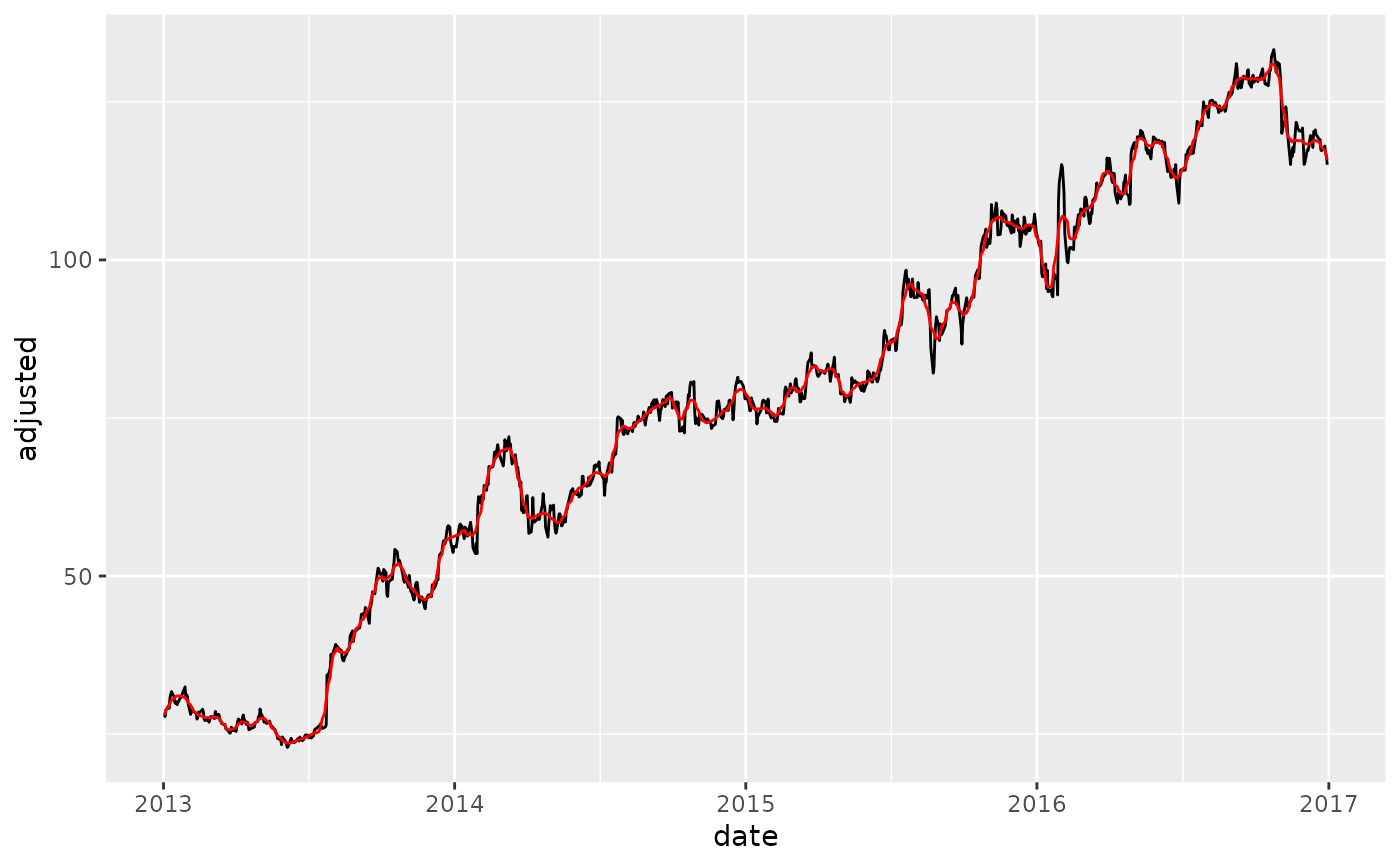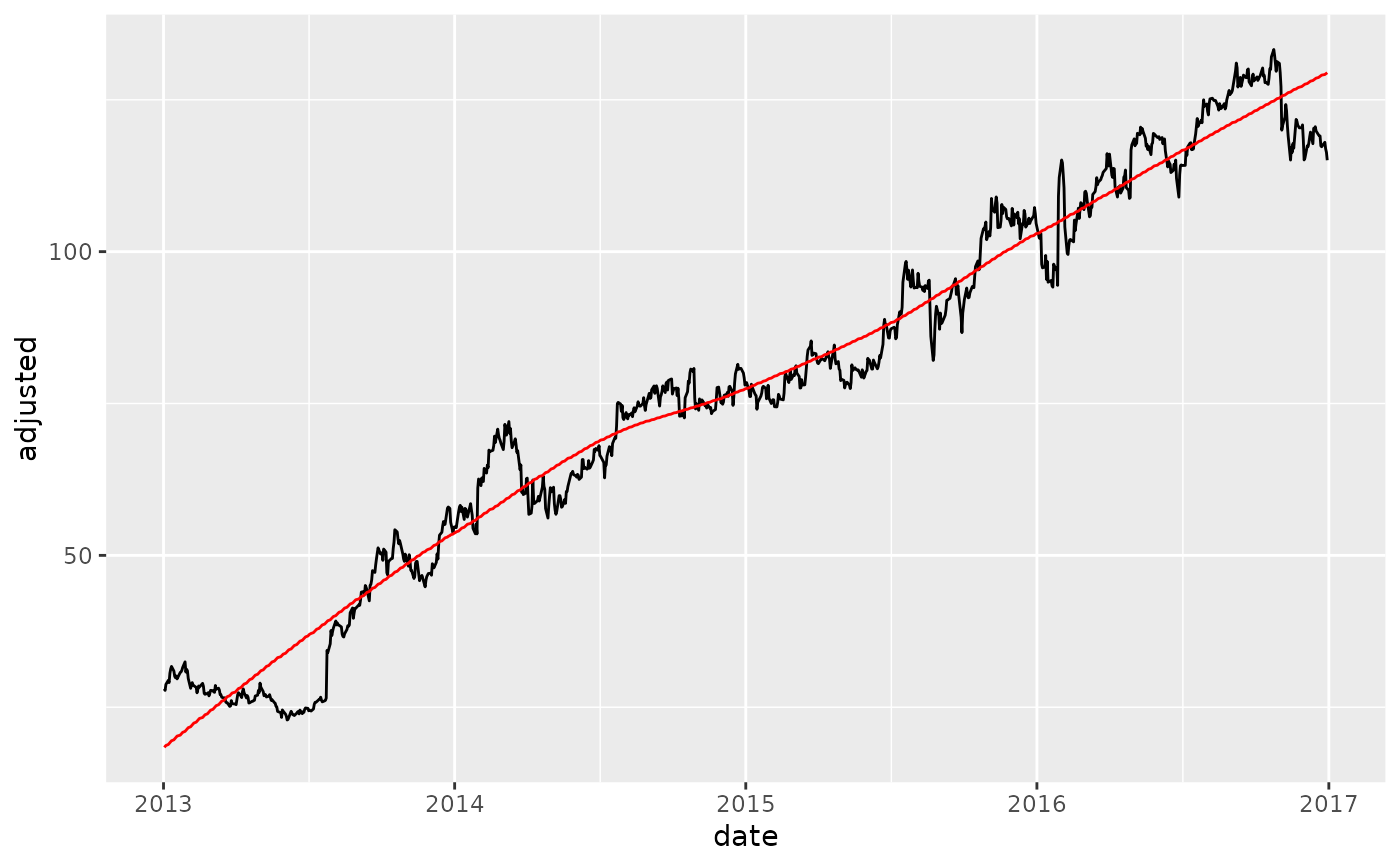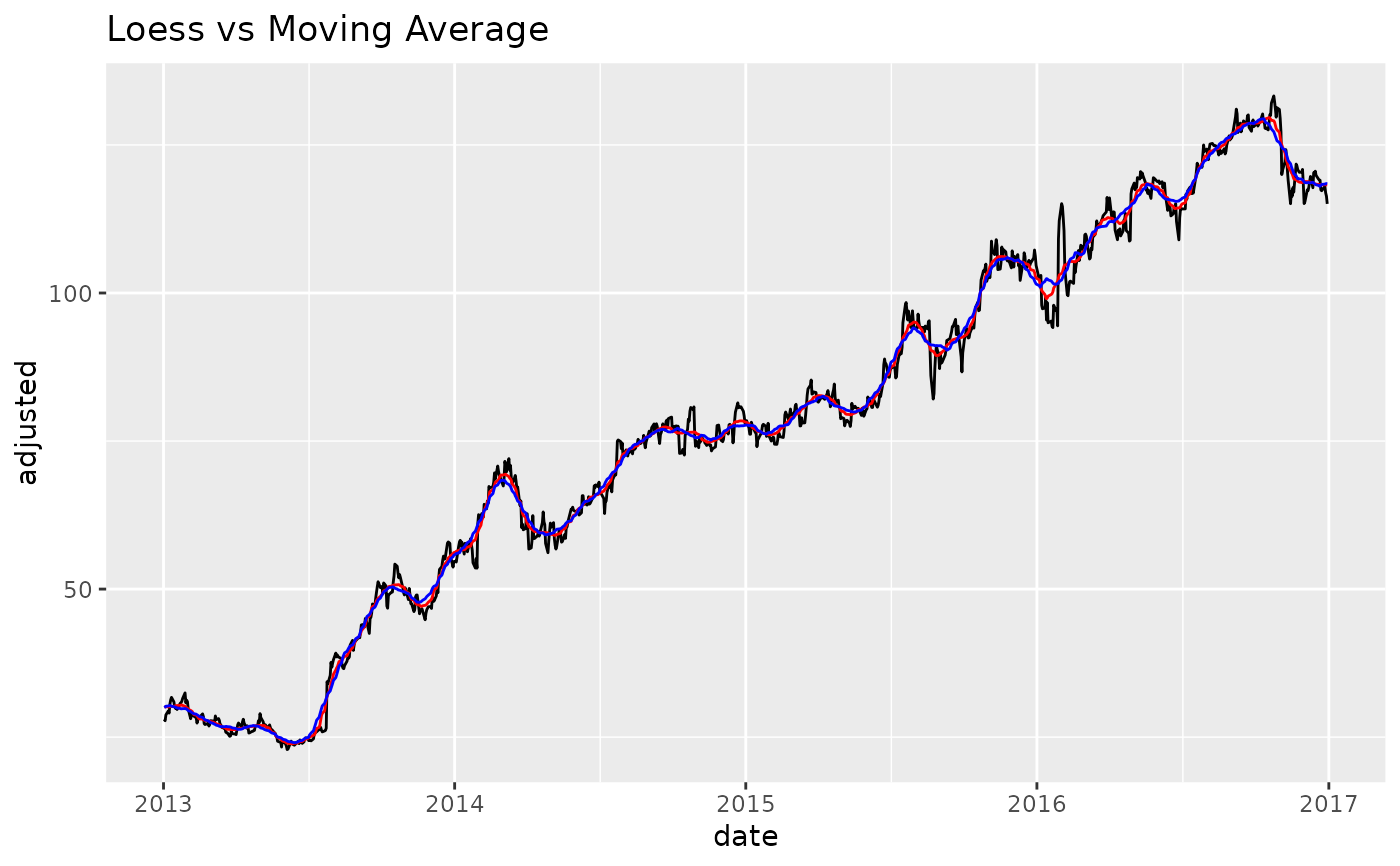smooth_vec() applies a LOESS transformation to a numeric vector.
Arguments
- x
A numeric vector to have a smoothing transformation applied.
- period
The number of periods to include in the local smoothing. Similar to window size for a moving average. See details for an explanation
periodvsspanspecification.- span
The span is a percentage of data to be included in the smoothing window. Period is preferred for shorter windows to fix the window size. See details for an explanation
periodvsspanspecification.- degree
The degree of the polynomials to be used. Accetable values (least to most flexible): 0, 1, 2. Set to 2 by default for 2nd order polynomial (most flexible).
Details
Benefits:
When using
period, the effect is similar to a moving average without creating missing values.When using
span, the effect is to detect the trend in a series using a percentage of the total number of observations.
Loess Smoother Algorithm
This function is a simplified wrapper for the stats::loess()
with a modification to set a fixed period rather than a percentage of
data points via a span.
Why Period vs Span?
The period is fixed whereas the span changes as the number of observations change.
When to use Period?
The effect of using a period is similar to a Moving Average where the Window Size
is the Fixed Period. This helps when you are trying to smooth local trends.
If you want a 30-day moving average, specify period = 30.
When to use Span?
Span is easier to specify when you want a Long-Term Trendline where the
window size is unknown. You can specify span = 0.75 to locally regress
using a window of 75% of the data.
See also
Loess Modeling Functions:
step_smooth()- Recipe fortidymodelsworkflow
Additional Vector Functions:
Box Cox Transformation:
box_cox_vec()Lag Transformation:
lag_vec()Differencing Transformation:
diff_vec()Rolling Window Transformation:
slidify_vec()Loess Smoothing Transformation:
smooth_vec()Fourier Series:
fourier_vec()Missing Value Imputation for Time Series:
ts_impute_vec()
Examples
library(dplyr)
library(ggplot2)
# Training Data
FB_tbl <- FANG %>%
filter(symbol == "FB") %>%
select(symbol, date, adjusted)
# ---- PERIOD ----
FB_tbl %>%
mutate(adjusted_30 = smooth_vec(adjusted, period = 30, degree = 2)) %>%
ggplot(aes(date, adjusted)) +
geom_line() +
geom_line(aes(y = adjusted_30), color = "red")
 # ---- SPAN ----
FB_tbl %>%
mutate(adjusted_30 = smooth_vec(adjusted, span = 0.75, degree = 2)) %>%
ggplot(aes(date, adjusted)) +
geom_line() +
geom_line(aes(y = adjusted_30), color = "red")
# ---- SPAN ----
FB_tbl %>%
mutate(adjusted_30 = smooth_vec(adjusted, span = 0.75, degree = 2)) %>%
ggplot(aes(date, adjusted)) +
geom_line() +
geom_line(aes(y = adjusted_30), color = "red")
 # ---- Loess vs Moving Average ----
# - Loess: Using `degree = 0` to make less flexible. Comperable to a moving average.
FB_tbl %>%
mutate(
adjusted_loess_30 = smooth_vec(adjusted, period = 30, degree = 0),
adjusted_ma_30 = slidify_vec(adjusted, .period = 30,
.f = mean, .partial = TRUE)
) %>%
ggplot(aes(date, adjusted)) +
geom_line() +
geom_line(aes(y = adjusted_loess_30), color = "red") +
geom_line(aes(y = adjusted_ma_30), color = "blue") +
labs(title = "Loess vs Moving Average")
# ---- Loess vs Moving Average ----
# - Loess: Using `degree = 0` to make less flexible. Comperable to a moving average.
FB_tbl %>%
mutate(
adjusted_loess_30 = smooth_vec(adjusted, period = 30, degree = 0),
adjusted_ma_30 = slidify_vec(adjusted, .period = 30,
.f = mean, .partial = TRUE)
) %>%
ggplot(aes(date, adjusted)) +
geom_line() +
geom_line(aes(y = adjusted_loess_30), color = "red") +
geom_line(aes(y = adjusted_ma_30), color = "blue") +
labs(title = "Loess vs Moving Average")

